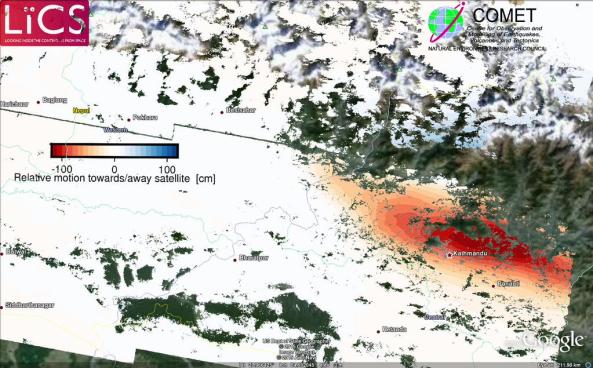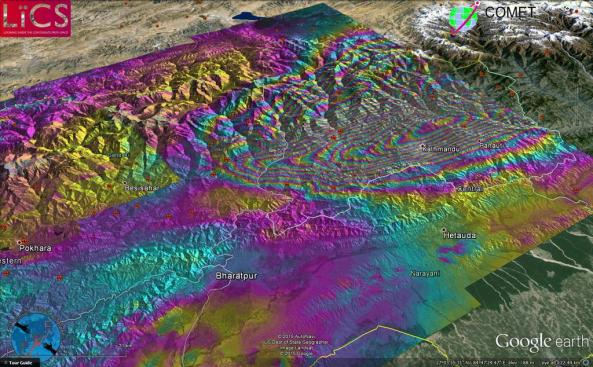 David Bekaert is a PhD student based in the School of Earth and Environment at the University of Leeds. David’s research involves using space based remote sensing technologies and atmospheric corrections for the detection of small magnitude ground movements. In this guest blog, David provides some technical details showing how weather models can be used to estimate the scale of atmospheric delays in the new European Space Agency‘s Sentinel 1a satellite radar data.
David Bekaert is a PhD student based in the School of Earth and Environment at the University of Leeds. David’s research involves using space based remote sensing technologies and atmospheric corrections for the detection of small magnitude ground movements. In this guest blog, David provides some technical details showing how weather models can be used to estimate the scale of atmospheric delays in the new European Space Agency‘s Sentinel 1a satellite radar data.
Sentinel 1a is a C-band Synthetic Aperture Radar with a repeat acquisition rate of 12 days. In combination with Sentinel 1b (estimated launch in 2016), the acquisition rate will decrease to 6 days (click here for more Sentinel 1 information). This high repeat rate together with the large illuminated tracks (200 km wide) make the Sentinel 1 constellation an attractive source of data to study the cryosphere and solid earth.
An example Sentinel 1 interferogram over Italy is shown in Figure 1a (by NORUT and PPO.Labs, see http://insarap.org). This data is not continuous, but wrapped, were each color cycle represents 2.6 cm of displacement in the radar line of sight (LOS). Unwrapping this correctly and the correction for tropospheric artefacts are two of the main challenges within the InSAR community.

A) Sentinel 1a IW interferogram over Italy. Copyright by NORUT and PPO.labs (http://insarap.org), as part of ESA InSARap using Copernicus data. B) Our estimated tropospheric correction using the 75 km ERA-I weather model product. Courtesy of Bekaert David. ERA-I data were provided by ECMWF. Each color cycle represents 2.6 cm displacement in the radar line of sight (LOS).
The high Sentinel 1 repeat rate does not necessary implies smaller atmospheric signals, as the atmosphere varies from day to day, and in space. In Figure 1b we demonstrate that the tropospheric correction estimated from the ERA-I (75 km) weather model outputs, from the European Centre for Medium- Range Weather Forecasts (ECMWF), shows promising results in reducing tropospheric arctifacts over a large region as imaged by Sentinel 1a. We find good agreement between the Sentinel 1a interferogram A) and our estimated tropospheric delay B) (e.g north-east region, south-west region, the volcanoes Etna and Vesuvius, and other locations).
In general we find that the weather model is capable of estimating the long-wavelength features well. While the weather model is capable of estimating the magnitudes correctly, the timing and thus location in space might be off. The problem of the troposphere will be further reduced in future, with a longer time-series of sentinel 1 acquisitions. These long-term observations together with tropospheric corrections will allow us to detect smaller magnitude surface deformations.
More Information:
[1] More of David’s research on his website: http://davidbekaert.com
[2] http://www.see.leeds.ac.uk/people/d.bekaert








